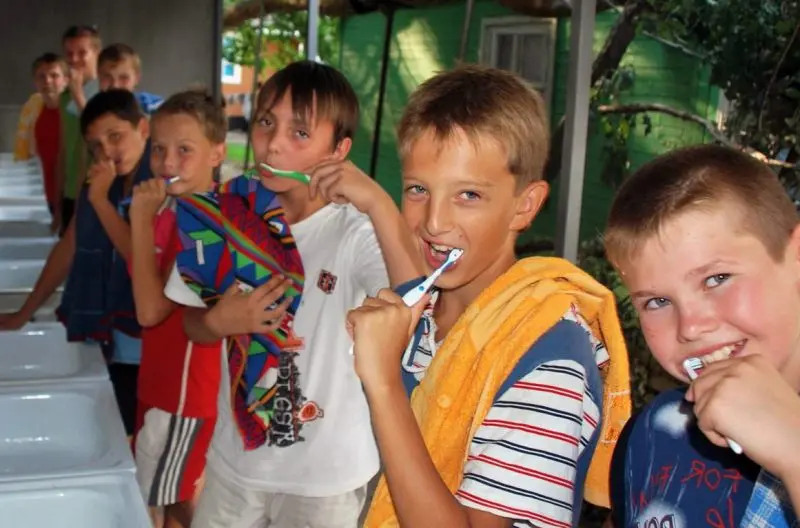In pioneer camps, the principle of age differentiation is employed, allowing for a more tailored approach to the unique characteristics of each of the three groups of children: Octoberists (ages 7-9) make up Group I, junior pioneers (ages 10-12) form Group II, and senior pioneers (ages 13-15) comprise Group III. One of the key conditions for a fulfilling rest for children in outdoor pioneer camps is the proper organization of their daily activities. Each squad has a daily schedule that strictly aligns with the age-related characteristics of the children, based on the following principles: maximum time spent outdoors; rational hardening of the body; balanced nutrition; physical activity; physical education; and work.
Physical education positively impacts a child’s body only when health status, age, gender, and developmental characteristics are taken into account, while ensuring consistency, progression, and gradual increases in physical load. In the pioneer camp, the following forms of physical education are available for children:
1. Hardening through air, water, and sunlight.
2. Morning hygiene gymnastics.
3. Active games.
4. Participation in various sports sections.
5. Sports competitions.
6. Preparation for and completion of summer standards of the GTO (Ready for Labor and Defense) program, Levels I and II.
7. Tourism and excursions.
8. Work processes.
The organization of corrective gymnastics and therapeutic physical education for children in special groups with developmental deviations and posture issues takes on significant importance in the pioneer camp. Classes for these groups are held three times a week outdoors, led by a physical education instructor according to a schedule, under the supervision and methodological guidance of the camp’s physician.
All sports competitions are conducted under the supervision of medical staff at the camp. The doctor examines all participants and grants permission for their involvement. A significant aspect of the health-promoting activities in pioneer camps is tourism, which serves as a form of active recreation, a great means of hardening, and has a positive effect on the cardiovascular and nervous systems.
The duration of hikes is determined based on the age of the group: for children under 9 years old and those in other physical education groups, walks and excursions outside the camp are organized. Before each hike, the doctor examines every participant and grants permission for their participation.
The rest schedule in the pioneer camp includes engaging in socially beneficial work aimed at fostering a love for physical labor, developing work skills, and teaching children to care for themselves. Properly organized, manageable physical labor outdoors has health benefits. Teenagers over 13 years old are involved in agricultural work in collective farms and state farms, as well as on the agricultural plot of the pioneer camp. Children under 13 participate in the cultivation of decorative plants and their care. In state and collective farms, strict work schedules are established: for children aged 13-15, the total duration does not exceed 2 hours, while for children under 13, it is limited to 1 hour. Safety protocols are enforced during work. Tasks must be simple, eliminating the risk of injury, poisoning, or exposure to harmful industrial factors.
The favorable environmental conditions of health institutions, created by the combination of water, sunlight, ozonated air, and green spaces in outdoor and resort areas, should be utilized effectively. As a result of proper hardening of a child’s body using all natural factors, there is a significant increase in hemoglobin levels in their blood, improved metabolism, strengthened nervous system, enhanced compensatory functional capabilities, reduced fatigue, and increased resistance to illness.

